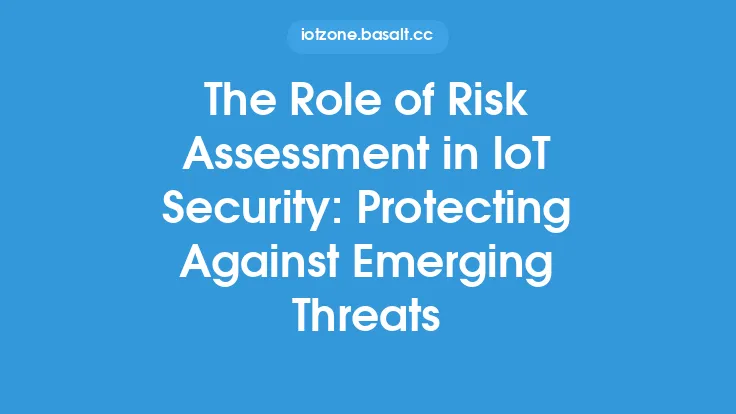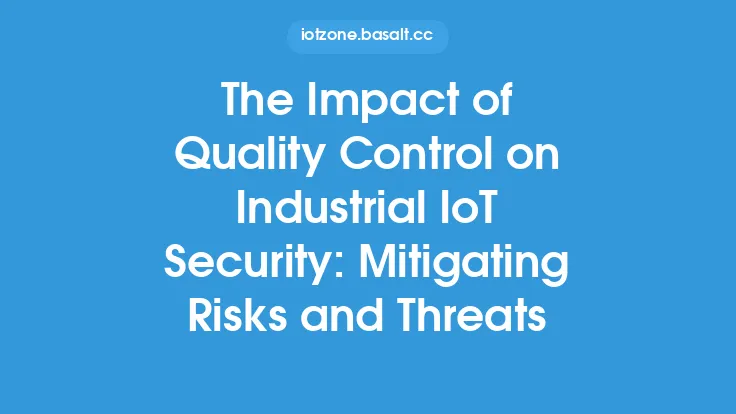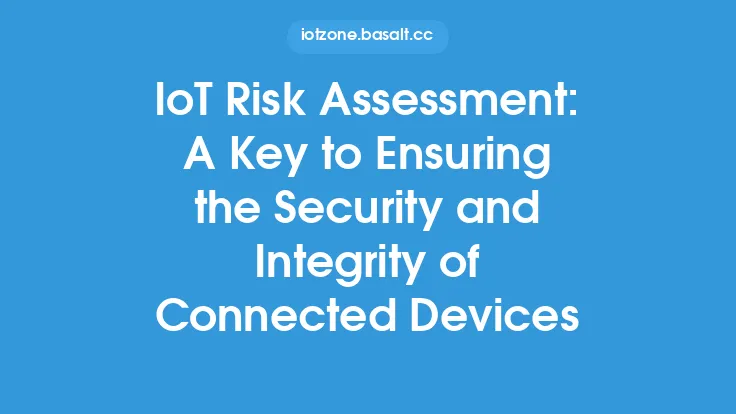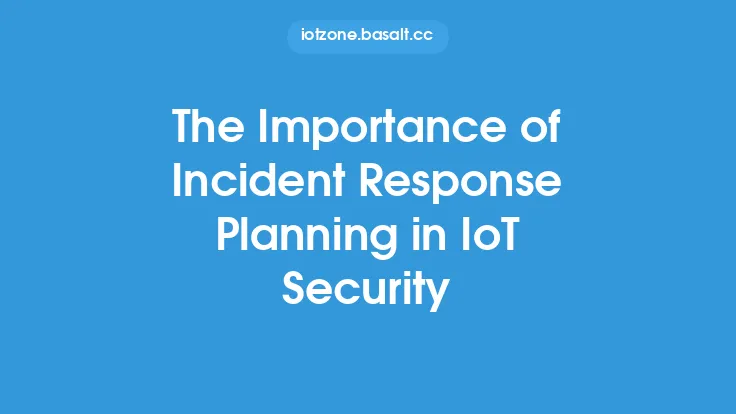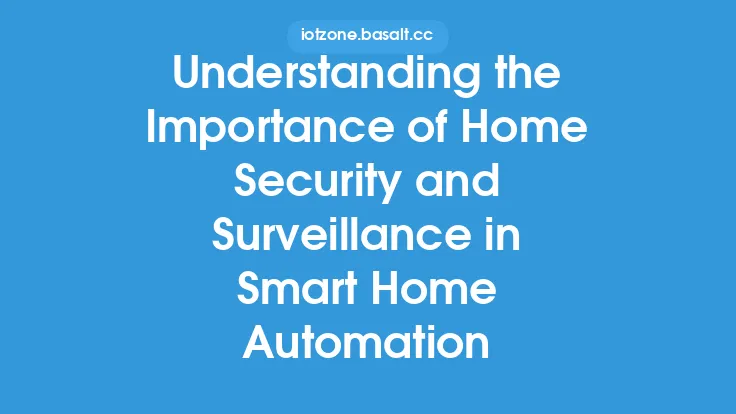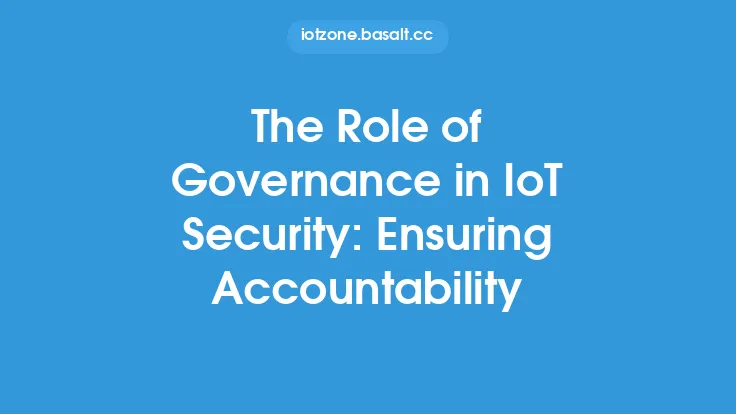The increasing number of connected devices in the Internet of Things (IoT) has created a vast attack surface, making it essential to prioritize risk assessment in IoT security. As the IoT ecosystem continues to grow, the potential risks and threats associated with it also multiply. Risk assessment is a critical component of IoT security, as it enables organizations to identify, evaluate, and mitigate potential risks before they can cause harm. In this article, we will delve into the importance of risk assessment in IoT security, exploring the benefits, challenges, and best practices for mitigating potential risks.
Introduction to Risk Assessment in IoT Security
Risk assessment is a systematic process used to identify, analyze, and evaluate potential risks associated with IoT devices, systems, and networks. It involves a thorough examination of the IoT ecosystem, including devices, data, and connectivity, to identify vulnerabilities and potential threats. The goal of risk assessment is to provide a comprehensive understanding of the potential risks and threats, enabling organizations to prioritize and mitigate them effectively. In the context of IoT security, risk assessment is essential for ensuring the confidentiality, integrity, and availability of data, as well as preventing financial losses, reputational damage, and other consequences of a security breach.
Benefits of Risk Assessment in IoT Security
The benefits of risk assessment in IoT security are numerous. Some of the most significant advantages include:
- Improved security posture: Risk assessment helps organizations identify and mitigate potential risks, reducing the likelihood of a security breach and improving their overall security posture.
- Compliance with regulations: Risk assessment is often a requirement for compliance with regulations, such as GDPR, HIPAA, and PCI-DSS. By conducting regular risk assessments, organizations can demonstrate their commitment to security and compliance.
- Cost savings: Risk assessment can help organizations avoid costly security breaches by identifying and mitigating potential risks before they can cause harm.
- Enhanced reputation: Organizations that prioritize risk assessment and IoT security are more likely to be viewed as responsible and trustworthy by customers, partners, and stakeholders.
- Better decision-making: Risk assessment provides organizations with a comprehensive understanding of potential risks, enabling them to make informed decisions about IoT investments, deployments, and security measures.
Challenges of Risk Assessment in IoT Security
Despite the benefits, risk assessment in IoT security is not without challenges. Some of the most significant obstacles include:
- Complexity of IoT ecosystems: IoT ecosystems often involve a large number of devices, systems, and networks, making it difficult to identify and assess potential risks.
- Lack of standardization: The lack of standardization in IoT devices and systems can make it challenging to develop effective risk assessment frameworks and tools.
- Evolving threats: The IoT threat landscape is constantly evolving, with new threats and vulnerabilities emerging regularly. This makes it essential for organizations to stay up-to-date with the latest threats and vulnerabilities.
- Limited resources: Small and medium-sized organizations may not have the resources or expertise to conduct comprehensive risk assessments, making it challenging to prioritize and mitigate potential risks.
Best Practices for Risk Assessment in IoT Security
To overcome the challenges and ensure effective risk assessment in IoT security, organizations should follow best practices, including:
- Conduct regular risk assessments: Regular risk assessments help organizations stay up-to-date with the latest threats and vulnerabilities, enabling them to prioritize and mitigate potential risks effectively.
- Use a risk assessment framework: A risk assessment framework provides a structured approach to identifying, analyzing, and evaluating potential risks. Popular frameworks include NIST, ISO 27001, and COBIT.
- Involve stakeholders: Risk assessment should involve stakeholders from across the organization, including IT, security, and business teams. This ensures that all aspects of the IoT ecosystem are considered and that risks are prioritized effectively.
- Consider the entire IoT ecosystem: Risk assessment should consider the entire IoT ecosystem, including devices, systems, networks, and data. This ensures that all potential risks are identified and mitigated.
- Stay up-to-date with the latest threats and vulnerabilities: Organizations should stay informed about the latest threats and vulnerabilities, using this information to update their risk assessment frameworks and tools.
Technical Considerations for Risk Assessment in IoT Security
From a technical perspective, risk assessment in IoT security involves several key considerations, including:
- Device security: IoT devices should be designed with security in mind, including secure boot mechanisms, encryption, and secure communication protocols.
- Network security: IoT networks should be designed to prevent unauthorized access, using techniques such as segmentation, firewalls, and intrusion detection systems.
- Data security: IoT data should be protected using encryption, access controls, and secure storage mechanisms.
- Firmware and software updates: IoT devices and systems should be designed to receive regular firmware and software updates, ensuring that vulnerabilities are patched and security features are updated.
- Secure communication protocols: IoT devices and systems should use secure communication protocols, such as TLS, DTLS, and CoAP, to prevent eavesdropping, tampering, and other attacks.
Conclusion
Risk assessment is a critical component of IoT security, enabling organizations to identify, evaluate, and mitigate potential risks before they can cause harm. By understanding the benefits, challenges, and best practices for risk assessment in IoT security, organizations can prioritize and mitigate potential risks, ensuring the confidentiality, integrity, and availability of data. As the IoT ecosystem continues to grow and evolve, it is essential for organizations to stay up-to-date with the latest threats and vulnerabilities, using this information to update their risk assessment frameworks and tools. By prioritizing risk assessment and IoT security, organizations can ensure a secure and trustworthy IoT ecosystem, protecting against emerging threats and maintaining the trust of customers, partners, and stakeholders.
